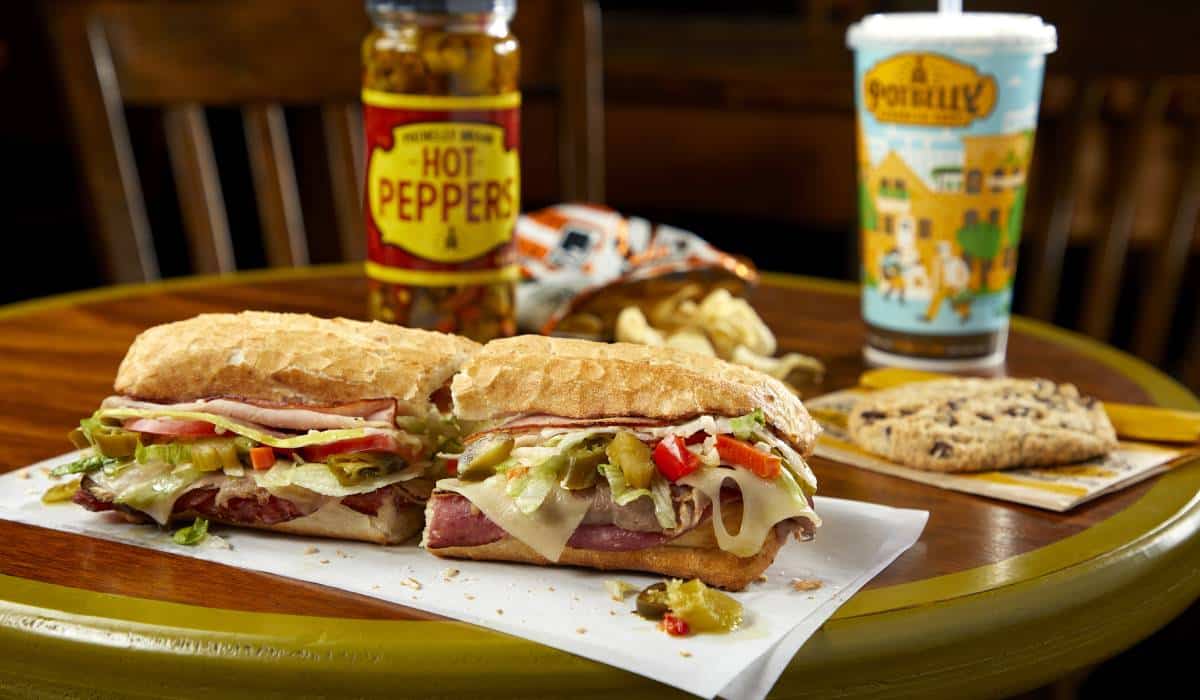After spending 18 months elevating its consumer-facing tech stack with a new website and app, Potbelly is turning its attention toward streamlining back of house.
It will come in the form of Potbelly Digital Kitchen, an in-shop platform designed to improve a restaurant’s ability to sort orders, present them to employees, and coordinate processes. In turn, Potbelly expects to increase speed of service, throughput, accuracy, and food quality.
“What we’ve done is taken the advantage that Potbelly already had by having two make lines,” said CEO Bob Wright during the chain’s Q2 earnings call. “We’ve talked about that a lot over the last couple of years and digitizing both of those lines so that we can be even better at delivering the customers’ expectations when they order digitally and even more successful with throughput and with customer quality when someone comes in the front door and goes through the front line.”
Potbelly is able to monitor stores with the system in place and troubleshoot against operational gaps. It can also use data to better deploy labor. Wright said the digital kitchen is in a handful of shops and that he’s “pleased with the results so far.” The sandwich chain plans to do additional testing and continue contemplating investment costs around a broader rollout.
“We had always seen this down the pipeline,” Wright said. “We were working on it a little more quietly, but we also know that in the shops, there’s an opportunity for additional technology investments, whether they’re through software enhancements that allow us to manage the business better, like I mentioned, some with our labor guide and the financial performance metrics that we have, the operation standards evaluation tools that we use.”
READ MORE: Off Transformational Year, Potbelly Sets Sights on 2,000 Restaurants
The announcement came as Potbelly turned in 17.2 percent same-store sales growth in the second quarter year-over-year. It also achieved a record $22,902 in average weekly sales per restaurant, or an annualized AUV of $1.2 million. Airport and Central Business District stores, both hit hard by the pandemic, saw comps increase 27.9 percent and 61.3 percent, respectively. Website/app is mixing 36 percent, thanks to digital marketing of LTOs and Perks loyalty program offerings.
The Perks program has grown to more than 2.2 million members.
“We still think we’ve got a lot of dry powder here,” said Wright, referring to targeted digital-only promotions. “We’re a full quarter now into the segmented offers and the check level data and segmentation that we get out of that. We’re learning about what works in terms of promotional activity and the algorithms that we use to target those consumers … So we think there’s a lot more we can do there. We’re looking forward to not only growing just total Perks members, but the contribution to the business.”
Potbelly reported net income of $600,000 in Q2, compared to a net loss of $3.9 million last year. It marked the chain’s first positive net income quarter since Q1 2017. Adjusted EBITDA was $5.8 million, up significantly from $1.9 million in the year-ago period, and shop-level margin expanded to 11.4 percent, versus 9.7 percent last year.
Food and beverage costs were 28.5 percent, an uptick from 27.2 percent from 2021. Potbelly attributed it to higher volume, as well as bigger input costs on proteins, packaging, paper products, and breadth. For the full year, the chain expects 18 percent food and paper inflation, mostly from protein. Labor costs were 31.4 percent, down from 33 percent last year due to topline performance and positive impacts from staffing initiatives like referral bonuses, the tipping initiative, and the brand’s hours-based labor guide.
Potbelly has taken two price increases this year, and could potentially implement one more.
“We haven’t seen demand fall off as a result of the price increases,” CFO Steve Cirulis said. “You’ve probably heard from others, there’s some softening out there in the environment. But for us, we’ve been really careful about the way that we thought about moving price to keep pace with inflation and balance that with customer value and demand. And so far, we’ve been pretty happy with the way we to be able to work that balancing.”
The fast casual finished Q2 with 440 restaurants, including 393 company-operated stores and 47 franchises. The chain has conducted two Discovery Days this year, with intentions of advancing development deals and refranchising negotiations. Potbelly wants to refranchise roughly 25 percent of its corporate footprint by the end of 2024 and ramp up annual franchise unit growth to at least 10 percent via shop development area agreements of 10-20 restaurants. The chain also envisions $1.3 million in AUV and shop-level margins of 16 percent. Overall, the ultimate benchmark is reaching 2,000 units and at least an 85 percent franchised system.
Wright said the chain is in active discussions with “a very healthy pace” of franchise candidates at every stage, from initial lead and email to specific terms.
“I understand the question is coming from how can we really accelerate that?” the CEO said. “And are we going to be able to meet our near-term and long-term goals of this level of franchise growth? I will tell you, with all the internal insight that I have, I feel quite confident that that’s the case. There are a number of reasons, too. I just would like to say there are a number of reasons that we really can’t talk about the deals until they’re signed and closed and some of them are internal decisions.”
In Q3, Potbelly projects revenue of $113 to $118 million and shop-level margins between 9 and 12 percent. For the full year, it expects record AUV, double-digit same-store sales growth, and margins in the low double digits.






